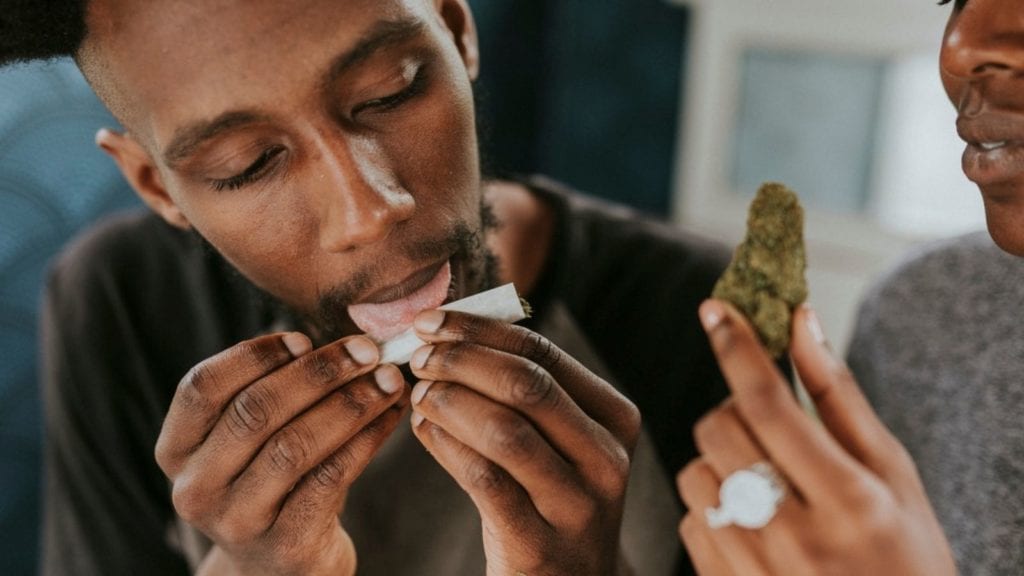Key takeaways.
-
What are terpenes?
Terpenes are the volatile, aromatic compounds found in cannabis flowers and throughout the plant kingdom. They're responsible for the aroma of different plants and flowers, including cannabis.
-
Do they contribute to the entourage effect?
Yes! Terpenes work synergistically with cannabinoids to produce the different variations in effects that we experience between strains.
-
What are some of the most common terpenes?
Among the most commonly found terpenes in cannabis are alpha-pinene, d-limonene, myrcene, and humulene.
You’ve likely come across the word “terpenes” before, and if you’ve been browsing the My Supply Co. store you’ll have noticed that we share which terpenes are in our smokeables and vapables. Terpenes aren’t exclusive to cannabis, but cannabis has a lot of them! They are the aromatic, volatile compounds that give many plants their distinct aroma.
Cannabis has a characteristic smell like no other plant, which is the result of the combination of terpenes present in any given bud. It’s estimated that there are around 120 different terpene compounds that the cannabis plant produces, although many of them are only produced in trace amounts.
Terpenes also have an interesting chemical relationship with cannabinoids. In the biological cascade of events that produces cannabinoids, terpenes are used as the building blocks. In this way, they are also essential to the development of cannabinoids.
Like we mentioned, terpenes are found in a huge variety of plants and most of us smell them in everyday cooking and juicing. In this article, we’re having a look at some of the common terpenes found in cannabis, what they do, and whether they serve any purpose in the therapeutic effects of cannabis.
A little world of terpenes.

Terpenes are a group of aromatic hydrocarbons that can be further broken down into monoterpenes, sesquiterpenes, diterpenes etc. Their categorization depends on the number of isoprene units it carries, where a monoterpene is made of two isoprene units. A sesquiterpene contains three linked isoprene units, diterpenes four, and so on.
There are thousands of different terpenes out there in the world, and as we mentioned, over 100 in cannabis.
What makes these little guys funky is that they form the building blocks of cannabinoids. In the biochemical process of making cannabinoids, the cannabis plant itself actually uses terpenes. The cannabinoid is also known as a terpenophenolic compound, which means “terpene with a phenol group”.
It’s why often when cannabis enthusiasts talk about cannabis, they also talk about terpenes. The different combination of terpenes and their concentrations is what enables you to distinguish between a bag of Sour Lemon OG and Pink Kush using only your sense of smell.
Terpenes, cannabinoids, and the entourage effect

Only recently have terpenes piqued scientific interest in how they might contribute to the therapeutic effects of cannabis. Dr. Ethan Russo has a particular interest in the subject, where he talks about the synergy of cannabinoids and terpenes being fundamental to the therapeutic properties of cannabis. In his research, he gives special attention to terpenes that might produce synergy with respect to pain, inflammation, addiction, anxiety, epilepsy, and more.
When researchers began to dabble in the pharmacokinetics of how CBD might counteract some of the psychoactive effects of THC, the torch all of a sudden shone very brightly on the concept of the entourage effect. Here we have an example of how CBD and THC might work together to create an altogether third effect that isn’t quite CBD and isn’t quite THC.
The entourage effect is basically what we’ve just said, but the amalgamation of hundreds of compounds. Given that terpene concentration in cannabis are usually as high as cannabinoid concentrations, the final “entourage” is extremely complex. The fact that different strains of cannabis have been tested and demonstrated wildly different terpene profiles is also a testament to the fact that there is real variability between strains and their effects.
Which terpenes can be found in cannabis?
With over 120 different terpenes found in cannabis, there aren’t enough words in this article to go through all of them. However, the most abundant terpenes found in cannabis are d-limonene, α-pinene, β-caryophyllene, myrcene, and humulene. We’ll have a look at some of these terpenes in a little more detail.
D-limonene.
D-limonene is the citrus smell that comes out of your Sour Lemon OG bag or packs the punch in your Super Lemon Haze Vape Cart. D-limonene (as a component of citrus essential oils) is traditionally used in aromatherapy to energize and awaken.
In alternative medicine, d-limonene has been shown to reduce heartburn and gastric reflux.
Α-pinene.
The pinenes (α-pinene and β-pinene) are among the most abundant terpenes on the planet. They can be produced from turpentine, which is distilled from coniferous wood. They’re also found in plants like Sage, Eucalyptus, and anywhere you can imagine smelling that piney scent.
The pinenes have primarily been researched for their antifungal and antibacterial properties.
Β-caryophyllene.
Β-caryophyllene is the interesting terpene that’s also a cannabinoid. It has a spicy scent and is also found in black pepper. Most of the research around β-caryophyllene is in murine models, and has demonstrated anti-inflammatory activity. We wrote a whole article about this terpene, so check it out if you’re curious to know more.
Myrcene.
Myrcene is the most abundant terpene found in cannabis — in some strains, it makes up to 60% of the essential oil content. It’s thought that myrcene may lower resistance to the blood brain barrier and therefore potentiate the effects of cannabinoids when they’re used. This is what’s behind the rumour that eating a couple of mangoes a couple of hours before getting high makes you get higher.
But more pertinently, myrcene has been shown to increase transdermal absorption and is analgesic, which makes it a great therapeutic target for topical formulas.
Humulene.
Humulene is a terpene also found in hops — which is an ancestor of the cannabis plant! Hops are added to beer preparations to give them the “hoppy flavour” that beer drinkers love. This is a result of the humulene in hops. It has demonstrated significant anti-inflammatory activity in murine models, although little research has been done otherwise.
Bringing it all together.

WIth the entourage effect in mind, it’s important to remember that the effects of any one given terpene don’t necessarily define the effect of a strain of cannabis. The medicinal effects of a given terpene are an aspect of cannabis’ overall therapeutic effects, as the combination of all of them is what’s finally received by the user.
It’s what makes cannabis so complex and so rich — at least from a research perspective.
Have you ever used isolated terpenes? We’d love to hear your experiences in the comments.
Interesting read
Great read
It's nice to see a company really bearing with the info for it's consumers.
very informative thanks
Thanks for such an interesting article. A very informative read.
Β-caryophyllene I'll take this terpene please
Loving these informative posts
I haven't used them, but am acutely aware of how aromas affect moods.
Limonene reduces heartburn and acid reflux? Who knew! Just the ticket for me!
good info
Never really understood what a terpene was until I read this article! Thanks for this
Love all the new information that you are sharing with us
If only they could do something so that it doesn't have such a strong aroma. I think that's part of the turnoff.
Very interesting perspective. Actually, the aroma is what makes the terpene therapeutic at all. Or — the terpene's inherent nature is very aromatic, so to remove the aroma would require breaking down the compound and it wouldn't be therapeutic anymore! Terpenes are kind of like the essential oil of cannabis. The aroma is what makes the terpene, and it's also what gives it pharmacological actions.
NO, I haven't used terpenes on their own. So much information
Very informative, an interesting read 🙂
Who knew it was so complicated?! I had heard of d-limonene before but that's it. Fascinating.
Very helfful and informative for newbies. Ty
I love terpenes!
Very informative information
Interesting ...
super intersting
So much good information
If you believe essential oils have medical effects of course terpenes in weed do
I knew that Terpenes had something to do with plants!
Learned something new today
I didn't even realize that you could use terpenes on their own and had so many benefits to doing so.
This is the stuff they should have taught me in biology. Or maybe they did! I was high for most of it 🙂
hanks for such an interesting article!!
Thanks!
I wish more people living in Asian countries would give these a read rather than just claiming that it's bad because it's illegal :/
And this is why consuming the plant is so different from consuming THC or CBD on their own! I'm so excited for terpenes to boom the way essential oils have.
I have never heard of terpenes before very interesting
Educational
Thanks guys!
reminds me of chemistry classes lol
It’s what makes cannabis so complex and so rich — at least from a research perspective. ... yes .. will definately need to reread to comprehend it all